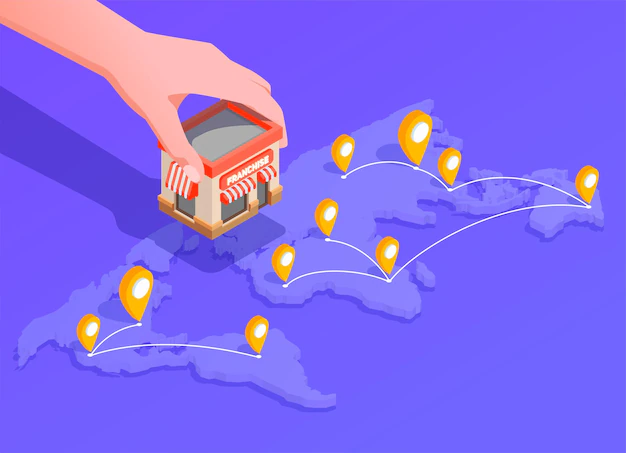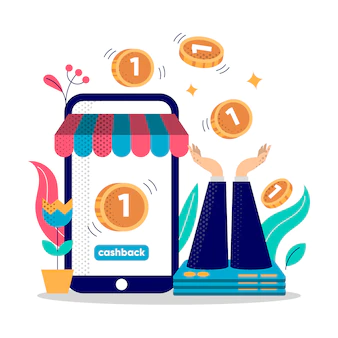There’s no doubt that the e-commerce sector has been on its growing streak in the last few years. One of the most recent trends in the e-commerce world is Hyperlocal E-commerce, also known as an on-demand delivery model. With the outbreak of the pandemic and subsequent global shutdowns, customers found it easier to resort to online shopping, and online stores and applications to even buy their basic necessities. With social distancing norms being imposed, several individuals who had children and old-age individuals found online shopping a safer option to get their daily essentials. In addition to that, the cashless and contactless features of online shopping led to nearly every household opting for online shopping.
As the demand for online shopping has continued to increase, it also has its own fair share of problems with respect to delivery, payment failures, product replacement, and other similar issues that led e-commerce players to rethink the whole process to make it customer-friendly. This led to the development of a new phenomenon called Hyperlocal E-Commerce. In this article, we are going to talk about the meaning of hyperlocal e-commerce, how it is different from e-commerce, its pros and cons, and everything else about it.
Table of Contents
What is Hyperlocal E-Commerce?

Before we understand the meaning of hyperlocal e-commerce, let’s first understand the meaning of a hyperlocal business. In simple words, a hyperlocal business refers to any business that looks towards building a local environment or a local network which enables customers to purchase products and services from stores in and around their neighbourhood. A hyperlocal business can bring all the products to your kirana store, restaurants, market and malls in an optimised manner.
Therefore, a hyperlocal marketplace simply caters to the needs of customers within a fixed geographical territory. Hyperlocal markets have become a great trend in an e-commerce stores. Hyperlocal e-commerce has delved into several industries such as grocery delivery, home essentials, home and personal care, to name a few. This altogether has added a new dimension to the e-commerce sector, thereby popularising hyperlocal e-commerce in India.
How Did Hyperlocal E-Commerce Become So Popular?

We have spoken about the evolution of the hyperlocal e-commerce industry, now let’s take a look at the reasons why hyperlocal e-commerce has become so popular amongst the masses. Some of the major benefits or advantages of hyperlocal e-commerce as are as follows;
- The hyperlocal e-commerce marketplace is a blessing in disguise for several local offline retailers and service providers. Hyperlocal e-commerce helps local store owners to exalt their business and take it to its next growth phase.
- Hyperlocal e-commerce gives customers a much better shopping experience. They get to shop products from the comfort of their homes without having to pay extra shipping fees and get the product delivered at a lesser price.
- Hyperlocal e-commerce advocates the concept of ‘instant delivery. Since hyperlocal businesses operate only within a particular geographical area, it helps the businesses attend to the needs of their customers in a quick and efficient manner. This has turned out to be one of the major advantages of hyperlocal e-commerce and its increasing popularity.
- Last but not the least, it enables hyperlocal businesses to increase sales and ramp up their revenue in a shorter time frame.
In addition to these advantages, there are several other reasons that have contributed to the making of hyperlocal e-commerce apps. With the pandemic in place, it became almost mandatory for all businesses to go online. Several merchants who had offline stores had to shift towards an online business to save themselves from facing losses and going into a financial crisis. If you are looking to start an online store for your business, visit Bikayi and start your dream online store in just 90 seconds.
How Does Hyperlocal E-Commerce Benefit Customers?

Here are some of the ways by which hyperlocal e-commerce benefits customers, they are;
- It gives customers an in-store shopping experience as they pick the products at their own convenience at affordable rates.
- It gives an opportunity to pick products that are sold by multiple hyperlocal business owners all at once.
- It gives customers the option to pay for their products and services through multiple payment methods.
- It provides customers with doorstep delivery and ensures that their product is delivered to their doorstep within a matter of a few hours.
- It also provides customers with the option to have a look at the product or even try a specimen piece in a store nearby, if they wish to.
- It provides customers with a forum to resolve their grievances in an instant and thereby giving them a smooth shopping experience.
- In addition to that, hyperlocal e-commerce businesses also offer huge discounts and sales which makes customers choose hyperlocal e-commerce over other shopping methods.
What Are the Prominent Domains in Hyperlocal E-Commerce?

Hyperlocal e-commerce has seeped into almost every sector that is active in the current market scenario. For ease of understanding, we have identified the most prominent and popular domains where many hyperlocal e-commerce businesses thrive. The most popular domains are as follows;
Consumers Goods
One of the most prominent domains of hyperlocal e-commerce is the Fast-Moving Consumer Goods (FMCG) sector. Since these products are always in demand, they are sold quickly within a shorter time frame. Here, FMCG goods include groceries, packaged foods, tinned and canned foods, dairy products, and medicines, which are some of the products that are sold at higher rates in the hyperlocal e-commerce industry. In India, Amazon Fresh, Big Basket, and Grofers are leading grocery delivery applications in urban areas in India.
Pre-Booking and Reservations
The travel industry is one of the prime movers of the on-demand service industry. Several popular cab service providers such as Ola and Uber have been dominating the travel industry. In addition to the ride-sharing services they offer, they have even penetrated into food delivery services and have started to capture the food market.
On the other hand, booking dinners, movies and concerts have also become a free breeze with hyperlocal businesses entering the game. BookMyShow has become a go-to platform for every individual to book their movie tickets. Dine Out offers a wide range of deals and discounts to their customers while visiting restaurants. Therefore, several hyperlocal businesses have become a part of the hyperlocal e-commerce sector that are blooming in the market.
Hospitality Services
There are multiple small and local business owners who look forward to setting up their business in the hyperlocal marketplace. They offer on-demand hospitality services such as housekeeping, spa, and massage services, and pet and personal care services have become highly popular. In addition to that, the hyperlocal business has even entered the manual labour sector and offers services related to appliance service, electrical services, mobile services, technicians, carpenters, home cleaning services, pest control, packers and movers, plumbers, and many other services. Urban Clap and UrbanHopperz are some of the popular applications that have been offering hospitality services on the on-demand model.
Pharma Services
With the influx of the pandemic, health services have been in demand since then. People have been paying more attention to healthcare and have begun prioritizing health as their number one priority. Since millions were stuck at homes, hyperlocal businesses and hyperlocal mobile applications made it easier for them to access healthcare services from the comfort of their homes. Several mobile applications like Practo, Tata 1MG, and many other name-worthy brands started to offer medical services through their respective mobile applications. This has enabled every individual to take good care of their health right from their living room.
Logistics
The most sought-after domain in the hyperlocal e-commerce marketplace. The logistics sector has been growing with high popularity amongst hyperlocal businesses. People make use of these logistic services to deliver products or items to their near and dear ones. There are numerous startups that are offering on-demand logistics services in India. The most popular is Dunzo, which has a large group of logistics and field executives running your errands on behalf of you. With respect to the logistics sector, there are several city-bound applications that offer their logistics services to a particular city alone, enabling them to serve their customers better.
It’s safe to say that the hyperlocal e-commerce platform has renewed the entire shopping experience for customers. It has made everything flexible and convenient and ensures that the products and services reach customers swiftly. Right now, even though several retailers still remain quite apprehensive about the concept of hyperlocal e-commerce, trends predict that the hyperlocal e-commerce market would continue to boom and contribute greatly to the e-commerce sector.













